
Facing obstacles in campus buildings
When you are visually impaired or wheelchair-bound, you experience our campus in a very different way: it turns out that some service desks are too high and that many doors are too heavy. And finding your way in an almost completely grey building such as Matrix is quite a challenge for someone who is visually impaired. Real Estate Management, Personnel and Organization, and Cursor were keen to find out what problems students with a disability run into - sometimes literally - and decided to test the accessibility of buildings on the TU/e campus site with a few ‘experienced experts.’ Tentative conclusion: TU/e does have many excellent facilities, but there certainly is room for improvement.
It costs Diego Parrondo Ojanguren obvious effort to reach the entrance of Atlas via the wheelchair ramp. Just passed the halfway point, the Spanish TU/e student of Operation Management and Logistics has exerted his strength and needs to place his wheelchair in a diagonal position in order to catch a breath. Swen KlaasenBos, who is wheelchair-bound as well, has less problems, but unlike Diego, he does have the extra muscle power it takes to roll a wheelchair over the ramp. Nevertheless, Swen, who works as a volunteer for PGE, short for Stichting Platform Gehandicaptenbeleid Eindhoven (Platform Foundation Wheelchair Policy Eindhoven) also has some points of improvement: “That belt on the side of the ramp is unnecessary, and your wheel can get stuck in this gap,” he says as he points downwards. A week earlier, fellow PGE volunteer Simon de Waal reached the conclusion that the entrance isn’t too steep, but too long. “A small lift would be ideal.” The ramp at the entrance of Matrix poses less problems as it turns out, but the electronic doorknob at the entrance which opens the door is missing.
Some TU/e students and PGE volunteers tested Atlas, Matrix, MetaForum and Gemini for two consecutive Mondays in May. Simon de Waal wasn’t the only one who went out to test these TU/e buildings during the first week, so did Computer Science and Engineering students Celeste Troost and Dennis op ‘t Roodt. Celeste is able to see at just a few meters, and Dennis has difficulty walking with one of his legs. Next week, it’s KlaasenBos’s and Ojanguren’s turn.
Both times, the students will be joined by some staff members of Real Estate Management, Personnel and Organization (the Occupational Health, Safety, Environment & Radiation Protection service), and PGE. Real Estate Management will identify the areas of improvement and PGE will give advice. The foundation will also make a list of all the positive aspects of the abovementioned TU/e buildings and other buildings in Eindhoven which they will then publish on a website.
Communicate at eye level
The ‘experienced experts’ reacted positively to the service desk in Atlas during both the first and the second round; it’s easy for wheelchair users to reach the desk and to communicate at eye level, and there is even a small fold-down table where you can sit at and put your documents on. The counter of the cafeteria in Atlas is perfectly accessible as well, except that paying with a bank card is almost impossible because wheelchair users can’t reach the ATM device, which can’t be disconnected. During a later visit to Matrix and Gemini, it turns out the service desks are simply too high; this holds true for Matrix in particular where wheelchair users face a high, black wall.
Heavy doors
Back to Atlas, where the students and volunteers are entering the lecture hall. Getting inside isn’t as easy as one might think because of the heavy doors. And the members of PGE can prove that the doors are heavy indeed, using their so-called pocket balance steelyard. Cable tension up to a kilo is manageable sitting in a wheelchair, but the doors in Atlas, as well as those in the other buildings, are much heavier. A possible solution could be to remove or change the setting of the door-springs, but that would jeopardize fire safety. In any case, Real Estate Management will note it down.
Desk is missing
The lecture hall in Atlas has room for wheelchair users in the front row, but a desk is missing. This turns out to be the case in the other buildings as well. “I can’t place my laptop anywhere during lectures,” Diego says. Celeste Troost has difficulty walking the stairs of many lecture halls on campus because many of these stairs are irregular. Celeste is unable to read a text on the board anyway, but the slides are sent to her via email and Dennis helps her by sharing his notes. This lecture hall also has a loop system for people with a hearing impairment, says Bert Verheijen, policy staff member at Real Estate Management. This is still rather exceptional at TU/e, but he expects that more and more lecture halls will have such a system in the future.
Touchscreen
Time to quench our thirst? The coffee and beverage machines on campus are easy to operate, but wheelchair users who would like a Coke can’t reach the ATM. Celeste would have to ask for assistance anyway because she can’t read the text on the touchscreen. “More and more places have touchscreens, but that’s not practical for me at all. Pushbuttons would be helpful.” PGE policy supporter Marianne Snoeijs has another suggestion: to use a voice-controlled system. Moments later, she has another helpful suggestion: to place wheelchair logos on the lower placed lockers.
Alarm
We continue our tour of the TU/e campus with a visit to the disabled toilets. The one in Atlas is perfectly in order. It has a somewhat heavy door, but there is more than enough space. The alarm is tested as well, but unfortunately, the receptionist does not notice the signal. It turns out that the signal she received can’t be heard - a sound signal will be added later - making it virtually impossible to distinguish it from all the other alerts and notifications the receptionists receive. But, if the alarm hasn’t been turned off after ten minutes, a warning signal will be redirected to security.
Later, when the test is repeated in Matrix, a receptionist does rush forward to offer help. However, the partition between the toilet and the shower proves to be a small point of disappointment because it leaves no room for wheelchair users to make the transfer to the toilet.
Contrast
Visually impaired people such as Troost find in particularly difficult to find their way in Matrix and on the top floors of MetaForum, mostly because of the lack in contrast. There’s not enough color difference, which makes it hard for her to see the outline of a door. Nor is there any color contrast on the stairs. The elevators in Atlas have the advantage that they tell people which floor they are on. She is visibly happy when she reaches the first floor in MetaForum. “That’s where I feel most comfortable, and where I know my way.”
Satisfied
Even though the students and volunteers have more than enough points of improvement, they are generally satisfied with the TU/e campus. They know how to navigate the buildings and how to circumvent possible problems. Celeste Troost: “I believe I should be the one to adjust and that others shouldn’t have to adjust to me. Bags lying around on the floor are a problem for me, but what can you do about it?” Dennis is one of the people who help her find her way on campus. And yes, things don’t always go as expected, but she has a very pragmatic attitude about it: “Well, ‘bang means stop,’ and ‘splash means wet.’”
Diego Parrando Ojanguren, too, found it difficult to find his way, especially in the beginning. Nowadays, his daily routine starts with an elevator ride in the Auditorium, from where he is able to reach the other buildings via the footbridges or the elevators.
Eye-opener
Bert Verheijen, policy staff member at Real Estate Management, is satisfied with the tour of the TU/e campus. “Seeing things through the eyes of our target group for once was an eye-opener for me as well. It’s good to approach things from the perspective of the target group in question.” One of the eye-openers Verheijen refers to concerns the signposting on and around campus – and this doesn’t apply to people with a disability alone. The PGE employees and volunteers also had a hard time finding their way on campus and in the buildings. “It’s a shame when people can’t find our facilities, we will evaluate this internally and try to figure out how to improve this.” During a different conversation, Verheijen also referred to the elevators underneath the stairs in MetaForum as a point for improvement because they are hard to locate.
Other important elements mentioned by Verheijen are the use of color, the heavy doors, and the height difference of the stairs. Every point for improvement has been noted down, but it remains to be seen whether all the necessary adjustments can be made. “It’s quite a challenge in the existing buildings especially. Removing a shower partition in Matrix isn’t a problem, but placing new stairs is a different matter. And a change to the color somewhere in the building affects the entire color scheme.” Another example of something that is difficult to change: “Wheelchair users can listen to a presentation on the staircase of Vertigo, but they can’t come down to give a presentation themselves. We strive for equality in the use of our buildings, but sometimes you run up against practical limitations.”
Foil to the glass walls in Atlas
This does not change the fact that adjustments will be made where possible. For instance, foil has been applied to the glass walls in Atlas in order to prevent people from walking into them. As far as Verheijen is concerned, the architects who will work on the new buildings should always take into account the needs of TU/e employees and students with a disability. “The architectural firm that was responsible for Atlas will also work on Gemini and Laplace. I want to discus the use of color with them, among other things.” Verheijen also says that he will include any possible adjustments in TU/e’s technical manual. Such adjustments may entail the setting of the doors, for instance. First, the points for improvement will be discussed within Real Estate Management, subsequently with Occupational Health, Safety, Environment & Radiation Protection, and finally with the ‘governance board integral safety.’
One thing is for certain no matter as far as Verheijen is concerned: The tour will be continued. “We would like to repeat this initiative at least once a year.”
Accessibility and Functionality
TU/e follows the so-called ITS regulation - short for Integrale Toegankelijksstandaard (Integrated Accessibility Standards Regulation) - for its buildings. This regulation outlines the criteria for a building’s fit out. Some buildings are completely ITS certified, while others meet qualifications only in certain subareas such as accessibility and functionality. Bert Verheijen says that Matrix and De Zwarte Doos are now both one hundred percent certified and that Atlas will follow soon. Buildings with an ITS certificate comply with the strictest accessibility standards, but Verheijen stresses that buildings without such a certificate are not necessarily poorly designed or maintained.
“A building might not be certified just because one part doesn’t function properly.” Conversely, sometimes a part of a building may function properly according to ITS standards, but not in practice. Verheijen mentions the ramp at the entrance of Atlas as an example.
Text-to-Speech software
Annemarie Urselmann, Manager Student Facilities at Education & Student Affairs, says that approximately eleven percent of TU/e students reported a disability last academic year. “We know that about seventeen percent does so because of ‘some kind of medical condition.’ We do not document these conditions, but these could include psychological complaints, migraine, diabetes, bowel disease, epilepsy, chronic fatigue, back problems, or a (physical) handicap.” That eleven percent is the average of previous years, says Urselmann. Students can apply for facilities and resources, such as extra time during exams for people with dyslexia, a special chair for people who suffer from back problems, and Text-to-Speech software for visually impaired people.

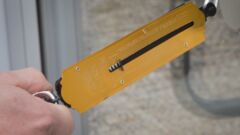
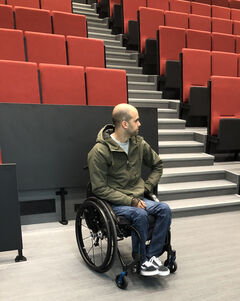
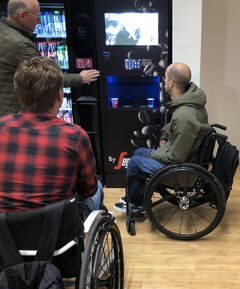
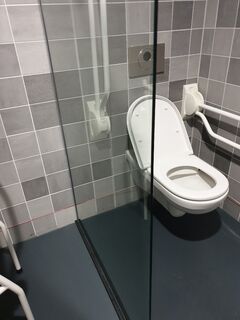
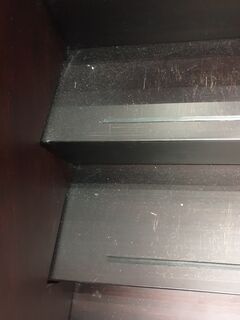
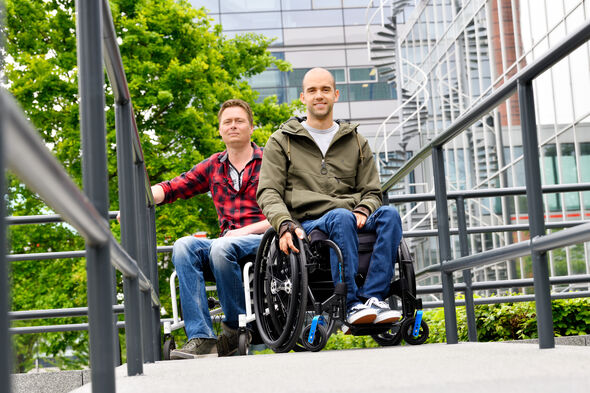
Discussion